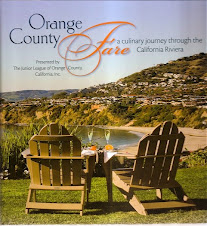This is the first year my mother hasn't made her traditional fruitcake. For well over 40 years, she has, just as her mother before her, fashioned an enormous batch of fruitcake to be enjoyed at home with a slice of sharp cheddar, proffered at holiday parties and open houses, presented Christmas Eve, and divided and sent internationally to all willing (or accepting) of such a treat. One such person was, until this year, me.
Just having said that, I'm suddenly forced to question whether the torch has been unexpectedly passed. Am I, next and only daughter in line, now burdened to take up the annual task of soaking spices, candied or dried fruits and nuts in booze and going on the look-out for accommodating recipients?
That's certainly the tough part. According to a recent poll, the holiday cake (also used as and referred to as "wedding cake") boasts a 40 percent approval rating, yet most North Americans seem decidedly anti-fruitcake. I think I may have answered that poll. The sentimentalist in me would have asserted a preference for it, but the reality is that I'd rather eat chocolate. The late Johnny Carson once joked that there really is only one fruitcake in the world, passed from family to family. Others quip, "if you have to choose between hemlock and fruitcake, hemlock is painless."When I weigh the amount of work and expense involved in carrying on the tradition with my relative ambiguity towards it, I'd just as well go without. On the other hand, I'm a sucker for all things Christmas, and I'm usually wild about fruit and nut (and alcohol-soaked) desserts. In the early 18th century, fruitcake (called plum cakes) was considered "sinfully rich," and outlawed entirely throughout Continental Europe. What if, just what if, I could create a Christmas cake that sinfully aroused the holiday spirit in all who would partake?
Here is my own mother's recipe:
3 cups mixed candied fruit
2 cups golden raisins
1 l/2 cups each of the following:
--candied cherries
--candied pineapple
--chopped almonds (My mom prefers to use roasted pecans.)
1 cup candied citron peel
2 cups flour
2 teaspoons baking powder
1/2 cup butter, softened
1 cup granulated sugar
3 eggs
1 teaspoon almond extract
1/2 cup orange liqueur or orange juice (Mom uses half juice and half Triple Sec.)
Lightly grease two 9 x 5 inch loaf pans, or 4 mini loaf pans. In a large bowl, combine mixed candied fruit, raisins, cherries, pineapple, almonds (or pecans) and citron peel. Toss with 1/2 cup of the flour and set aside. Stir together the remaining 1 1/2 cups flour, baking powder and salt in small bowl. In another bowl, cream the butter with sugar until fluffy, then beat in eggs, one at a time, add almond extract and beat well. Then combine the butter/sugar mixture with the flour mixture and the liqueur/juice. Fold in the fruit mixture. Turn into prepared pans.
Bake in 250 degree F oven for approximately 2-2 1/2 hours, or until a knife inserted into the center comes out clean. (Note: If using the small pans, it doesn't take quite as long to cook.)
Be careful not to overcook because it can dry out very easily. If it is well wrapped, it keeps several weeks in the fridge. Before the advent of refrigeration, fruitcakes were stored in wine-, brandy- or liqueur-soaked linens to keep them from growing mold, and also improve flavor. Makes 2 loaves, or 4 mini loaves.
Food Fact! Fruitcake dates back to Roman times, when it was prepared with pomegranate seeds, pine nuts, and raisins mixed into barley mash. During the Middle Ages, honey, spices, and preserved fruits were added, and crusaders and hunters were reported to have carried this type of cake to sustain themselves over long periods of time away from home. In the 1400s, Mediterranean trade of dried fruits arrived in England, and the fruitcake began to take root. By the 1700s, a ceremonial type of fruitcake was baked at the end of the nut harvest and saved and eaten the next year to celebrate the beginning of the next harvest, hoping it will bring them another successful harvest. With help from sugar from the American Colonies, between 1837 and 1901, fruitcake became exceedingly popular. Apparently, Queen Victoria waited a year to eat a fruitcake she received for her birthday because she felt it showed restraint, moderation and good taste. Fruitcake is also well-known as wedding cake. Rather than eat the cake at the reception, it is English custom for unmarried wedding guests to put a slice of the cake under their pillow at night so they will dream of the person they will marry.Fruitcake is also recognizable in the form of German stollen, also eaten at during Christmas holidays, and paneforte, a chewy, dense Italian fruitcake.
 A good cup of tea can be transcendant, warming chilled bones, soothing frayed nerves, or settling a tired body after a busy day. It is shared with a good book, over good conversation, or when in presence of royalty. The many methods of enjoying tea can take us far beyond the comfort of our own kettle. China, Morocco, France, England, Kenya, and Russia are all tea-drinking countries with their own unique serving traditions and tea preparations. Lisa Boalt Richardson’s latest book, The World in Your Teacup: Celebrating Tea Traditions, Near and Far
A good cup of tea can be transcendant, warming chilled bones, soothing frayed nerves, or settling a tired body after a busy day. It is shared with a good book, over good conversation, or when in presence of royalty. The many methods of enjoying tea can take us far beyond the comfort of our own kettle. China, Morocco, France, England, Kenya, and Russia are all tea-drinking countries with their own unique serving traditions and tea preparations. Lisa Boalt Richardson’s latest book, The World in Your Teacup: Celebrating Tea Traditions, Near and Far



















